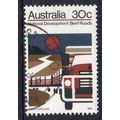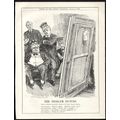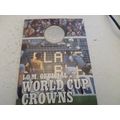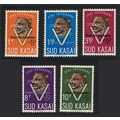Reynolds, Joshua - Maria Anne, Mrs Fitzherbert - art postcard
- Condition : Used
- Dispatch : 2 Days
- Brand : None
- ID# : 200509304
- Quantity : 1 item
- Views : 439
- Location : United Kingdom

- Seller : justthebook (+1703)
- Barcode : None
- Start : Sat 24 Apr 2021 05:19:08 (EDT)
- Close : Run Until Sold
- Remain : Run Until Sold
Checks/Cheques
 for 1 item(s) edit
for 1 item(s) edit
Shipping Calculator
More Listings from This Seller view all
Seller's Description
- Art Postcard
- Work of art title: Maria Anne, Mrs Fitzherbert 1756-1837 wife of Geirge IV
- Artist (if known): Joshua Reynolds
- Media or other details: painting
- Publisher / Gallery: National Portrait Gallery, London / on loan form Earl of Portarlington
- Postally used: no
- Stamp & postmark details (if relevant):
- Size: Modern
- Notes & condition details:
NOTES:
Size: 'Modern' is usually around 6in x 4in or larger / 'Old Standard' is usually around 5½in x 3½in. Larger sizes mentioned, but if you need to know the exact size please ask as this can vary.
All postcards are not totally new and are pre-owned. It's inevitable that older cards may show signs of ageing and use, particularly if sent through the post. Any faults other than normal ageing are noted.
Stock No.: A1185
Please ask if you need any other information and I will do the best I can to answer.
------------------------------------------------
Postage and packing charge should be showing for your location (contact if not sure).
UK - PayPal, Cheque (from UK bank) or postal order
I will give a full refund if you are not fully satisfied with the postcard.
----------------------------------------------
Sir Joshua Reynolds PRA FRS FRSA (16 July 1723 – 23 February 1792) was an English painter, specialising in portraits. John Russell said he was one of the major European painters of the 18th century.[1] He promoted the "Grand Style" in painting which depended on idealization of the imperfect. He was a founder and first president of the Royal Academy of Arts, and was knighted by George III in 1769.
Reynolds was born in Plympton, Devon, on 16 July 1723[2] the third son of the Rev. Samuel Reynolds, master of the Plympton Free Grammar School in the town. His father had been a fellow of Balliol College, Oxford, but did not send any of his sons to the university.[3] One of his sisters was Mary Palmer (1716–1794), seven years his senior, author of Devonshire Dialogue, whose fondness for drawing is said to have had much influence on him when a boy. In 1740 she provided £60, half of the premium paid to Thomas Hudson the portrait-painter, for Joshua's pupilage, and nine years later advanced money for his expenses in Italy.[4] His other siblings included Frances Reynolds and Elizabeth Johnson.
As a boy, he came under the influence of Zachariah Mudge, whose Platonistic philosophy stayed with him all his life. Reynolds made extracts in his commonplace book from Theophrastus, Plutarch, Seneca, Marcus Antonius, Ovid, William Shakespeare, John Milton, Alexander Pope, John Dryden, Joseph Addison, Richard Steele, Aphra Behn, and passages on art theory by Leonardo da Vinci, Charles Alphonse Du Fresnoy, and André Félibien.[2] The work that came to have the most influential impact on Reynolds was Jonathan Richardson's An Essay on the Theory of Painting (1715). Reynolds' annotated copy was lost for nearly two hundred years until it appeared in a Cambridge bookshop, inscribed with the signature ‘J. Reynolds Pictor’, and is now in the collection of the Royal Academy of Arts, London.[2]
Career
Cupid Untying the Zone of Venus (1788)
Having shown an early interest in art, Reynolds was apprenticed in 1740 to the fashionable London portrait painter Thomas Hudson, who had been born in Devon.[3] Hudson had a collection of Old Master drawings, including some by Guercino, of which Reynolds made copies.[3] Although apprenticed to Hudson for four years, Reynolds remained with him only until summer 1743.[3] Having left Hudson, Reynolds worked for some time as a portrait-painter in Plymouth Dock (now Devonport). He returned to London before the end of 1744, but following his father's death in late 1745 he shared a house in Plymouth Dock with his sisters.[3]
In 1749, Reynolds met Commodore Augustus Keppel, who invited him to join HMS Centurion, of which he had command, on a voyage to the Mediterranean. While with the ship he visited Lisbon, Cadiz, Algiers, and Minorca. From Minorca he travelled to Livorno in Italy, and then to Rome,[5] where he spent two years,[6] studying the Old Masters and acquiring a taste for the "Grand Style".[citation needed] Lord Edgcumbe, who had known Reynolds as a boy and introduced him to Keppel, suggested he should study with Pompeo Batoni, the leading painter in Rome, but Reynolds replied that he had nothing to learn from him.[3] While in Rome he suffered a severe cold, which left him partially deaf, and, as a result, he began to carry a small ear trumpet with which he is often pictured.
Reynolds travelled homeward overland via Florence, Bologna, Venice,[7] and Paris.[8] He was accompanied by Giuseppe Marchi, then aged about 17.[9] Apart from a brief interlude in 1770, Marchi remained in Reynolds' employment as a studio assistant for the rest of the artist's career.[9] Following his arrival in England in October 1752, Reynolds spent three months in Devon,[10] before establishing himself in London, where he remained for the rest of his life. He took rooms in St Martin's Lane, before moving to Great Newport Street, his sister Frances acted as his housekeeper.[10] He achieved success rapidly, and was extremely prolific.[11] Lord Edgecumbe recommended the Duke of Devonshire and Duke of Grafton to sit for him, and other peers followed, including the Duke of Cumberland, third son of George II,[12] in whose portrait, according to Nicholas Penny "bulk is brilliantly converted into power".[12] In 1760 Reynolds moved into a large house, with space to show his works and accommodate his assistants, on the west side of Leicester Fields (now Leicester Square).[13]
The Cottagers (1788)
Alongside ambitious full-length portraits, Reynolds painted large numbers of smaller works. In the late 1750s, at the height of the social season, he received five or six sitters a day, each for an hour.[14] By 1761 Reynolds could command a fee of 80 guineas for a full-length portrait; in 1764 he was paid 100 guineas for a portrait of Lord Burghersh.[15]
The clothing of Reynolds' sitters was usually painted by either one of his pupils,[16] his studio assistant Giuseppe Marchi,[17] or the specialist drapery painter Peter Toms.[16] James Northcote, his pupil, wrote of this arrangement that "the imitation of particular stuffs is not the work of genius, but is to be acquired easily by practice, and this was what his pupils could do by care and time more than he himself chose to bestow; but his own slight and masterly work was still the best."[16] Lay figures were used to model the clothes.[12]
Reynolds often adapted the poses of his subjects from the works of earlier artists, a practice mocked by Nathaniel Hone in a painting called The Conjuror submitted to the Royal Academy exhibition of 1775, and now in the collection of the National Gallery of Ireland. It shows a figure representing, though not resembling, Reynolds, seated in front of a cascade of prints from which Reynolds had borrowed with varying degrees of subtlety.[18]
Although not known principally for his landscapes, Reynolds did paint in this genre. He had an excellent vantage from his house, Wick House, on Richmond Hill, and painted the view in about 1780.[19]
The Age of Innocence c. 1788, Reynolds emphasized the natural grace of children in his paintings
Reynolds also was recognized for his portraits of children. He emphasized the innocence and natural grace of children when depicting them. His 1788 portrait, Age of Innocence, is his best known character study of a child. The subject of the painting is not known, although conjecture includes Theophila Gwatkin, his great niece, and Lady Anne Spencer, the youngest daughter of the fourth Duke of Marlborough.
Listing Information
| Listing Type | Gallery Listing |
| Listing ID# | 200509304 |
| Start Time | Sat 24 Apr 2021 05:19:08 (EDT) |
| Close Time | Run Until Sold |
| Starting Bid | Fixed Price (no bidding) |
| Item Condition | Used |
| Bids | 0 |
| Views | 439 |
| Dispatch Time | 2 Days |
| Quantity | 1 |
| Location | United Kingdom |
| Auto Extend | No |




















